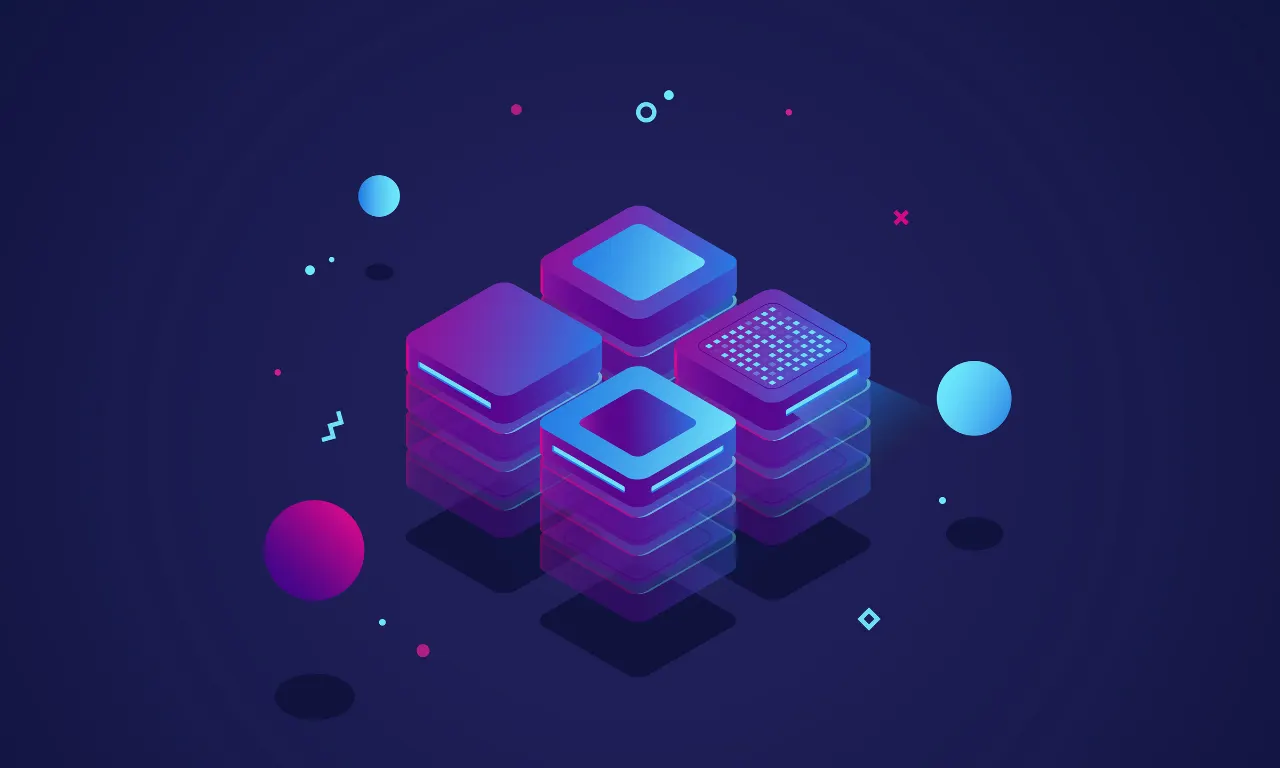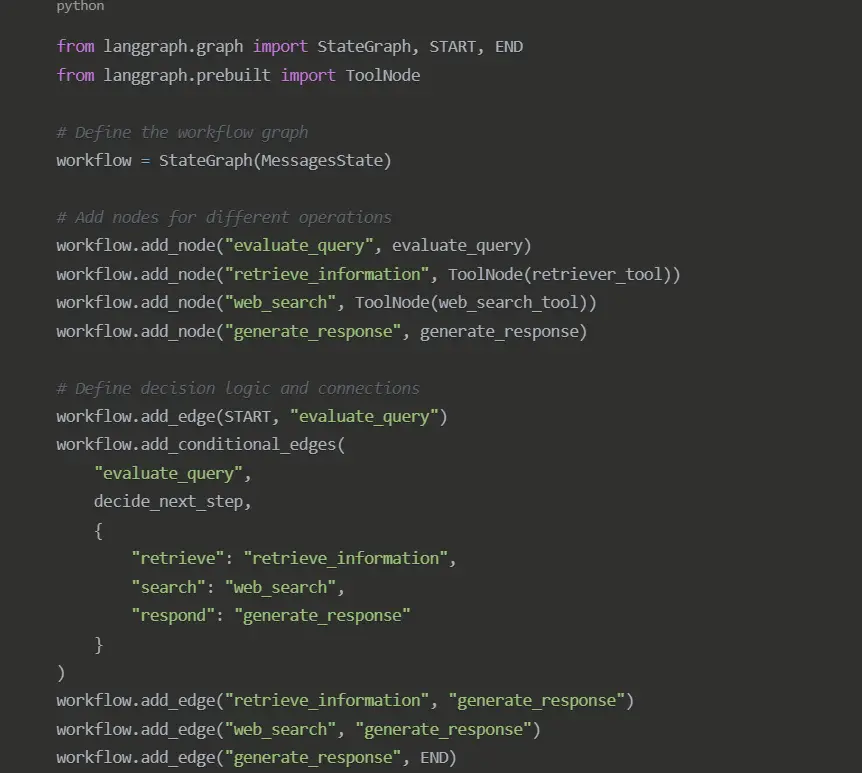Agentic RAG: Working Process, Real World Applications & Challenges

Agentic RAG extends traditional RAG by letting AI decide when, how, and what to retrieve, then learn from each interaction. It breaks complex queries into steps, uses frameworks like LangChain or LlamaIndex, and adapts retrieval strategies in real time. Key patterns include reflection/self-correction, multi-step planning, and on-demand tool integration. You’ll find it in advanced Q&A, research assistants, healthcare diagnostics, legal reasoning, and finance workflows. Next up: leaner reasoning, specialist agent teams, and industry-tailored tooling for smarter, more cost-effective AI.
Agentic RAG (retrieval-augmented generation) helps businesses by adding decision-making abilities to AI systems.
Traditional RAG helps large language models (LLMs) by retrieving information before generating responses, but it follows strict workflows. To understand agentic RAG meaning clearly, think of it as a system that doesn’t just retrieve - it decides how and when to do it.
Read this blog to see how autonomous AI retrieval systems work and how they differ from standard RAG implementations. You’ll also learn how these systems can revolutionise your data-heavy applications.
Whether you’re a developer creating AI tools or a business leader scouting for AI solutions, understanding agentic RAG will help you get optimum performance from AI.
Agentic RAG working explained in 3 steps
The system uses a flexible workflow for smarter information retrieval and response creation. These steps form the foundation of an agentic RAG implementation, where flexibility and feedback loops lead to better performance.
Step 1: Query analysis and planning
Traditional RAG jumps straight into a retrieval task. On the other hand, agentic RAG, like other forms of autonomous AI, first analyses the query.
It gauges if a query needs facts, reasoning, or both to pick the best retrieval method. Then it maps out a step-by-step plan, using multiple fetches, reasoning steps, or external tools as needed.
This approach helps break down complex queries → smaller parts, making them more manageable instead of attempting to tackle everything at once.
Step 2: Strategic retrieval and tool usage
In the second phase, the system uses frameworks like LangChain to carry out its retrieval strategy by selecting the appropriate tools. Meanwhile, traditional RAG uses only one retrieval method.
Agentic RAG using LangChain allows you to stitch together tools, retrievers, and workflows into one coherent system.
The agent checks the retrieval results and decides if they have enough information to answer the query. If not, it can rephrase queries, use different retrieval methods, or access other knowledge sources, all without human help.
One practical agentic RAG example is an AI assistant that blends internal documents with real-time web data to produce client-ready insights.
Step 3: Adaptive response generation and refinement
The final step is where the agent combines the retrieved information into a clear response while checking its quality. Unlike traditional RAG, which just generates based on the retrieved data, agentic RAG actively ensures the response will fully address the query.
If the agent notices any gaps or inaccuracies in the information, it can do more retrievals to fix those before giving the final answer. This self-correcting ability is a direct result of how the agentic RAG architecture is designed to monitor and adjust its own outputs in real time.
4-step agentic RAG implementation process
The autonomous retrieval approach brings together AI agents and retrieval-augmented generation in a self-improving loop. Here’s how you set it up.
Implementing agentic RAG requires careful architecture design, rooted in principles of agentic architecture in AI, and integration of several components. The agentic RAG implementation typically follows these key steps to create a functional autonomous system.
1. Lay the groundwork
Many implementations use agentic RAG using LangChain or LangGraph to create the agentic RAG architecture. They are often combined with vector databases like Chroma or Pinecone for effective retrieval.
2. Define tools and workflows
Here's a simplified agentic RAG example of how you might define a retrieval tool in LangChain:

3. Build decision-making logic

The core of this agentic RAG implementation is creating decision-making logic that tells you when and how to use different tools. This means setting up a state machine or workflow that can evaluate queries, make decisions, and perform the right actions.
If you're building an agentic RAG using LangGraph, you could structure it like this:
4. Add self-assessment and refinement
Implement logic for quality assessment and refinement that allows the agent to assess its own outputs and determine if additional information is required. This self-improving agent feature is what truly distinguishes agentic RAG from traditional approaches.
Pro tip: Leverage adaptive timeout and retry policies so your agent gracefully recovers from low-confidence or hung calls.
Framework comparison: LangChain vs LlamaIndex
LangChain shines when you need rich, customised workflows and multi-agent orchestration. While LlamaIndex (formerly GPT Index) is optimised for fast retrieval with built-in meta-coordination.
Let’s see a side-by-side comparison:
| Feature / Pattern | LangChain | LlamaIndex |
|---|---|---|
| Workflow complexity | Adaptive workflows with multi-step reasoning | Streamlined, document-centric retrieval |
| Agent architecture | Tool-calling agents & multi-agent orchestration | Document-specific agents + meta-agent coordination |
| Task decomposition | Breaks down complex tasks into subtasks | Hierarchical agent structures for focused queries |
| Retrieval strategy | Dynamic retrieval strategies via middleware hooks | Lightweight retrieval agents per data source |
| Decision and routing | Intelligent routing, reflection & planning | Meta-agent manages routing and aggregation |
| Self-improvement | Iterative feedback loops across agents | Built-in feedback within document-agent + manager loop |
Understanding 3 agentic design patterns
Agentic design patterns are the backbone that let AI systems act like autonomous collaborators. They plan ahead, reflect on outcomes, and take the help of external tools when needed. Let’s take a look at three of its more important patterns:
Get our complete guide on building AI agents from scratch
1. Reflection and self-correction
After each action, an agent looks back at its results: Did the last retrieval hit the mark?
If not, it tweaks its approach. This self-improvement loop, like “plan, act, reflect, adapt”, ensures agents learn from interactions rather than repeating the same mistakes.
2. Planning and multi-step reasoning
Before beginning their process, agents map out a clear route:
“First, fetch the customer profile. Next, analyse sentiment. Then, synthesise recommendations.”
This stepwise breakdown lets them tackle complex queries without losing context. Agents can juggle facts, logic, and creativity all in one pass by embedding multi-step reasoning into their workflows.
Pro tip: Use a “chain-of-thought budget” strategy, reserve heavy compute for the toughest sub-tasks, and use lightweight passes for the rest to balance cost vs. accuracy.
3. Tool use and external integration
No agent is alone. When raw data or specialised computation is needed, whether it’s a database lookup, a calculation API, or a custom analytics service, the agent calls the right tool at the right time.
This plug-and-play model turns simple retrieval systems into dynamic, context-aware problem solvers.

Real-world applications of agentic RAG across industries
Agentic RAG makes information retrieval smarter and more flexible, but it’s also more complex and resource-hungry. Here are five areas where its autonomous, self-improving agents really pay off:
1. Advanced question answering systems
Traditional RAG trips up on multi-step reasoning. Agentic RAG breaks down complex queries, applies dynamic retrieval strategies, and then weaves facts and logic into concise answers.
It is perfect for customer support bots that handle detailed product or policy questions.
2. Research and knowledge work assistants
Knowledge assistants powered by self-improving agents can scan review articles for big-picture context, drill into niche papers for specifics, then loop back if new threads emerge.
They use adaptive workflows that handle multi-step reasoning to keep researchers focused on insights, not search logistics.
3. Healthcare diagnostics
Imagine an AI that pulls patient history from EHRs, retrieves the latest radiology reports, and runs symptom checkers via external tools.
The system’s iterative feedback loops let it reflect on preliminary diagnoses, requesting more labs or specialist input before delivering an assessment.
4. Legal reasoning
A legal-tech system can parse statutes, case law, and contracts simultaneously.
Through hierarchical agent structures, one agent flags relevant precedents, another assesses risk clauses, and a meta-agent synthesises an opinion. This multi-agent collaboration speeds up brief drafting and boosts accuracy.
Check out how agentic AI is being used in different enterprises
Challenges and solutions with agentic RAG
Agentic RAG adds smarts and agility to retrieval, but it also brings extra complexity. Here’s how to tackle two of its biggest hurdles:
High computational load
Challenge: Multiple decision points mean extra LLM calls, higher latency, and rising operation costs.
Solution: Cache frequent query results and batch similar requests to reduce redundant calls.
Pro tip: Use distilled or smaller expert models for routine tasks, then hand off to a full-scale LLM only when needed.
Reliability and edge cases
Challenge: Dynamic workflows can break on unexpected inputs or corner-case data patterns.
Solution: Build a testing harness that simulates rare scenarios and tracks performance in real time.
Pro tip: Add simple fallback rules or a lightweight human-in-the-loop approval step for queries that exceed confidence thresholds.
Read more about agentic AI challenges with practical solutions
Where agentic RAG is headed
The autonomous system is evolving toward leaner, smarter reasoning and true multi-agent teamwork. Teams are slashing unnecessary LLM calls with distilled models and smart caching, trimming latency and cloud costs.
Instead of one do-everything agent, you’ll see specialist agents like fact-checkers, synthesisers, workflow managers, collaborating to cover each other’s blind spots.
These bundles are getting industry-specific: healthcare agents know EHRs and symptom checkers, legal agents parse statutes and case law, and finance agents hook into market-data APIs.
Business implications
-
Faster, sharper decision loops for a clear competitive edge
-
Lower TCO through optimized model and infrastructure usage
-
Scalable, self-correcting workflows with built-in domain expertise
This next wave of agentic RAG promises leaner reasoning, resilient collaboration, and truly autonomous systems that grow smarter (and more cost-predictable) with every interaction.
Concluding thoughts on agentic RAG architecture
Agentic RAG isn’t just a technical upgrade. It’s a mindset shift in how AI handles complexity - less scripted, more adaptive. These systems observe, decide, and improve. That unlocks new possibilities for any team working with dense, fast-changing information.
But building agentic systems means rethinking workflows from the ground up - starting with agentic RAG architecture that can handle decisions, memory, and retrieval adaptively
At GrowthJockey, we help founders and operators build agentic AI workflows that work smoothly in production. From early pilots to enterprise-scale systems, we simplify the process and assist you in moving forward with clarity and confidence.
FAQs on agentic RAG architecture
1. What is agentic RAG?
Agentic RAG’s meaning lies in its autonomy to combine traditional retrieval-augmented generation with independent decision-making. It can choose when to retrieve information, select sources, reformulate queries, and evaluate retrieved context before generating responses.
2. How to make agentic RAG?
To start an agentic RAG implementation, define available tools (retrievers, APIs, knowledge sources), build decision-making logic using frameworks like LangChain or LangGraph, implement quality evaluation mechanisms, and integrate everything with monitoring and fallback systems.
3. What is the difference between traditional RAG and agentic RAG?
The main difference is autonomy. Traditional RAG follows a fixed pattern, while agentic RAG can decide when to retrieve information, choose strategies, evaluate results, and perform multiple retrieval cycles for complex queries, offering more accurate responses.
4. What is the difference between RAG and agentic workflows?
RAG improves text generation by retrieving external knowledge, while agentic workflows focus on autonomous problem-solving and planning. The autonomous system merges these approaches, adding decision-making to the retrieval process while keeping the main goal of knowledge enhancement.








